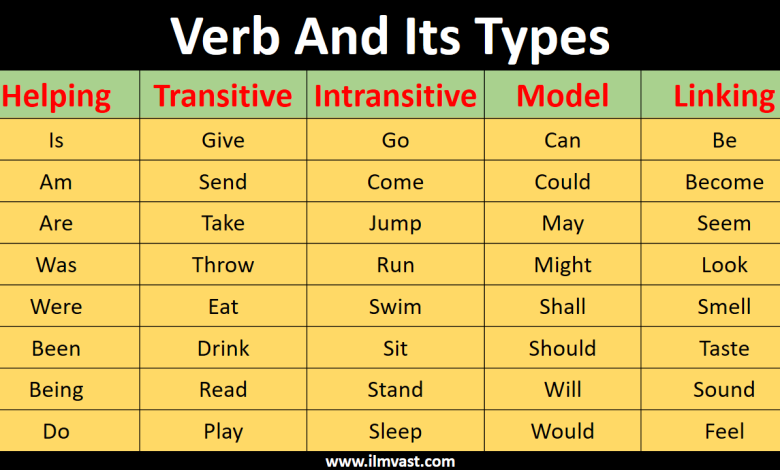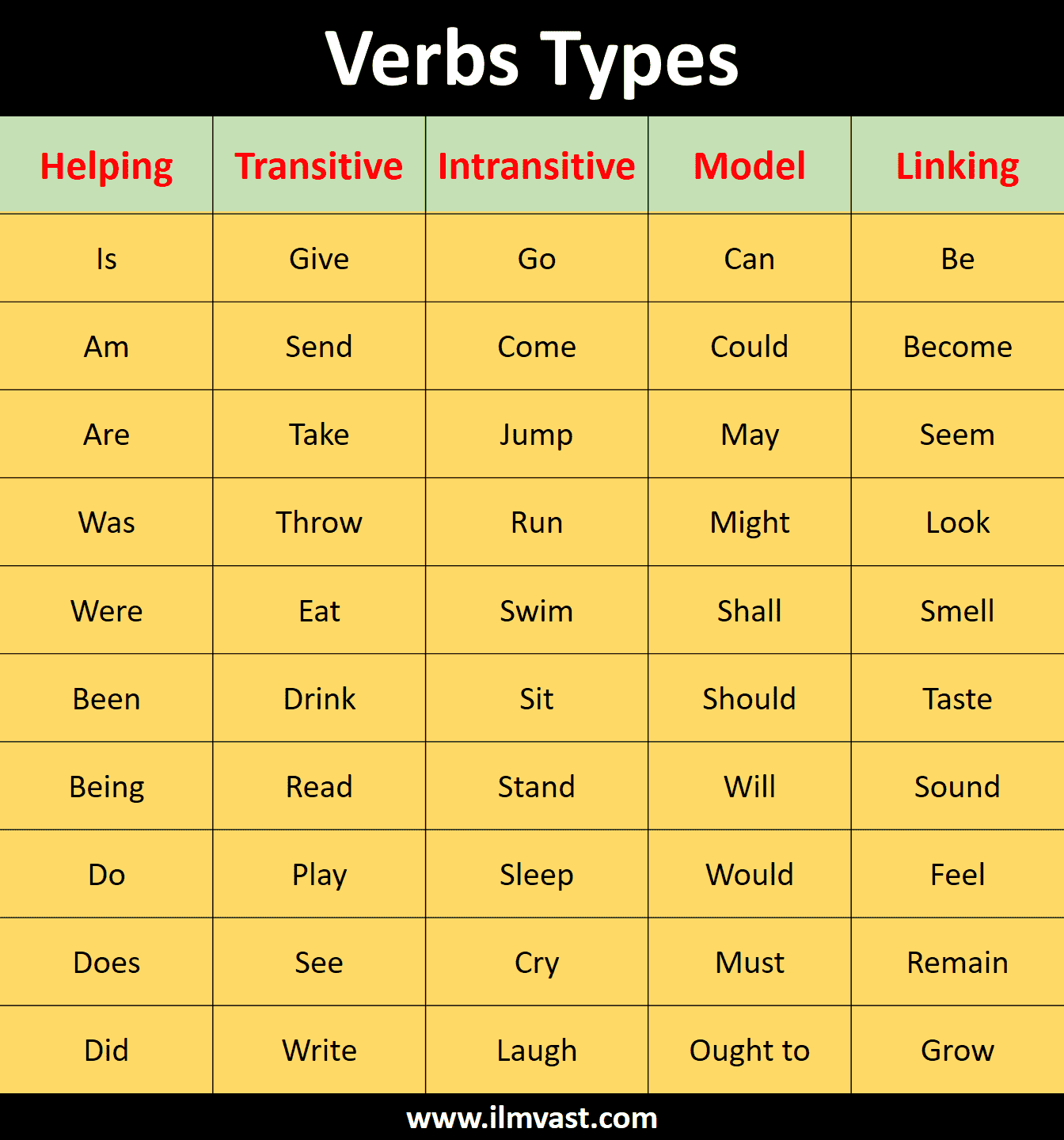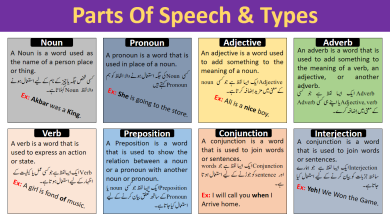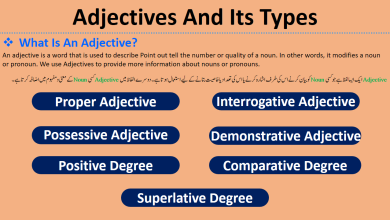What Is A Verb Definition Types & Examples In Urdu

Have you ever tried communication without a verb? it’s like driving a bus without Petrol. Verbs are the most important part of our daily communication, so that’s why we will learn the verb definition types in Urdu.
In this lesson, we will learn the 5th type of Parts of speech: Verb Definition Types & Examples In Urdu. Our English Language wouldn’t be complete without verbs. They are the powerhouse of our communication allowing us to express action states and emotions.
What Is a Verb In Urdu?
A verb is a word that tells or asserts something about a person or thing. It is the most important word in a sentence. No sentence can be made without a verb. In simple terms, a verb tells us what’s happening in the sentence. Verbs perform different roles in the sentence.
Verb ایک ایسا لفظ ہوتا ہے جو کسی چیز یا شخص کا عمل یا کیفیت بیان کرتا ہے۔ کوئی بھی جملہ اس کے بغیر نہیں بنایا جا سکتا اس لیے یہ بہت ضروری ہے۔
Types Of Verbs
There are many types of verbs transitive, intransitive, Model, Linking, or action verbs. We will discuss all of them in this lesson and learn the first verb definition types In Urdu.
Transitive Verbs
A transitive verb is a verb that denotes an action that passes over from the doer or subject to an object. These verbs require a direct object to complete their meaning.
Transitive Verb ایسا فعل ہے جس کا اثر فاعل سے مفعول میں براراست منتقل ہوتا ہے۔ یعنی ایسے مفعول کا ہونا ضروری ہے جو فعل کا اثر وصول کرے۔ مثلاَ
| Examples
Aslam Played football. Rabia learned her lesson. Shaista writes a letter. Usama did his homework. |
To Read The Previous Lesson Click The Below Link
What Is An Adverb And Its Types
Intransitive Verbs
An intransitive verb is a verb that denotes an action that does not pass over from the doer or subject to an object. These verbs do not require a direct object to complete their meaning.
Intransitive Verb ایک ایسا فعل ہوتا ہے۔ جس کا اثر مفعول تک منتقل نہیں ہوتا۔ یعنی مفعول نہ ہونے کے باوجود بھی وہ فل اپنا مفہوم مکمل کرادا کر سکتا ہے۔
| Examples
The boy laughs loudly. He ran a long distance. The baby sleeps peacefully. She cries out loudly. |
Auxiliaries/ Helping Verbs
The verbs ” be ” ( is, am, are, was, were, ) have, and do, are used with ordinary verbs to make Tenses, passive forms, questions, and negatives are called ” Auxiliaries ” or Auxiliary/ Helping Verbs.
کچھ افعال ایسے جیسے be, یعنی ( is, am, are, was, were, have, and do, ) عام افعال کے ساتھ استعمال ہو کر passive voice questions بناتے ہیں۔ ان افعال کو امدای افعال کہا جاتا ہے۔
Examples
| Be ( is, am, are, was, were ) | Have ( Has, have, had ) | Do ( do, does, did ) |
| I am writing a book. | He has worked. | Does he work? |
| She is playing cricket. | They have to go. | Do be quiet. |
To Read The Previous Lesson Click The Below Link
What Is An Adverb And Its Types
Model Verbs
Model verbs are used with other verbs to form compound verbs to convey a particular meaning. In simple terms, Model verbs express necessity, ability, permission, or possibility.
Model verbs دوسرے Verbs کے ساتھ استعمال ہو کر ایک خاص معنی و مفہوم ادا کرتے ہیں۔ یہ Verbs امکان، صلاحیت، یقین، اور اجازت کے اظہار کے لیے استعمال ہوتے ہیں۔
Examples
| May I ask you a few Questions? | کیا میں آپ سے چند سوال پوچھ سکتا ہوں؟ | Permission |
| Can you swim? | کیا تم تیر سکتے ہو؟ | Ability |
| You should keep your promise. | تمہیں اپنا وعدہ نبھانا چاہیے۔ | Duty or Obligation |
| We ought to help him. | ہمیں اس کی مدد کرنی چاہیے۔ | Moral obligation |
Linking Verbs
Linking verbs don’t tell you what someone or something does. Instead, they show you how someone or something is or feels. They connect the subject of a sentence to a word that describes it.
Linking Verbs کسی چیز یا شخص کے کام کو نہیں بتاتے ہیں۔ بلکہ وہ یہ ظاہر کرتے ہیں کہ کوئی شخص یا چیز کیسی ہے یا کیسا محسوس کرتی ہے۔ وہ جملے کے موضوع کو اس لفظ سے جوڑتے ہیں جو اس کی وضاحت کرتا ہے۔
| Examples
She is a good student. He became a doctor. The music sounds great. I feel happy today. |





